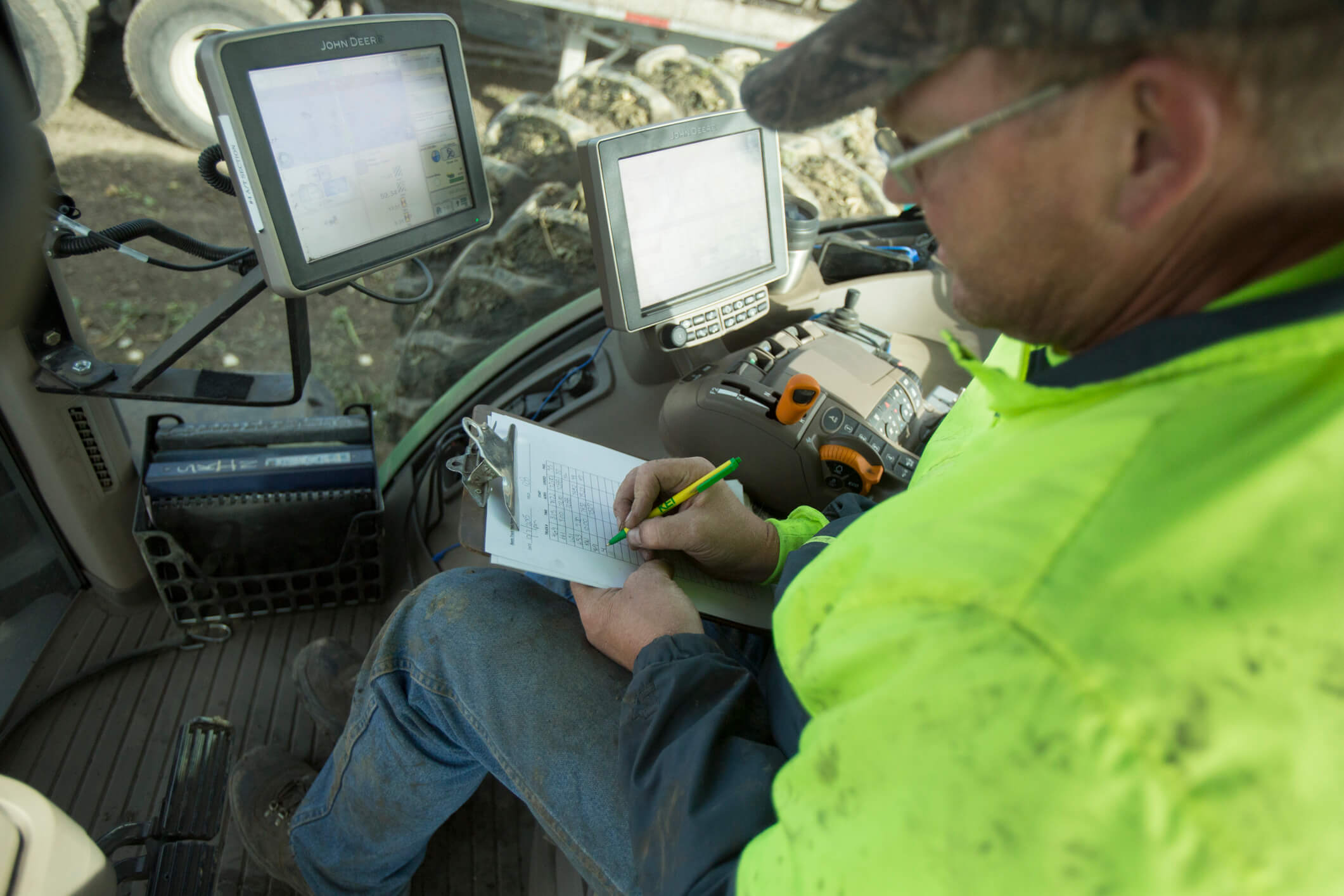4 Steps to Maximize Harvest Data

Data collected in the combine provides a wealth of information and invaluable teachings for the coming season. It’s important to not only capture yield data but to capture its full value. Here are a few ways you can prepare to glean the most from your harvest data this fall.
Rank Harvest Order
You can maximize efficiency by laying out a roadmap for harvest by comparing progress of fields with similar crops and planting dates. The R7® Field Monitoring Tool measures each field’s crop biomass and as the crop reaches peak biomass, they can be given top priority for harvest
Start With Accurate Data
It’s crucial that all combines are calibrated correctly while the first field is being harvested and again throughout harvest. This ensures data will be accurate, providing a strong basis for analyzing yield goals next season. Make sure to retrieve yield data as soon as possible so that it isn’t forgotten or lost.
Clean and Analyze Data
With harvest data loaded into a computer system, it’s time to clean the file, removing all the outliers and bad data sets that can distort results. For example, many yield maps will show high- and low-flow areas at the beginning and end of combine passes due to the sensor not taking an accurate measurement as the combine speeds up and slows down. Then it’s time to analyze:
Capitalize on Learnings
While yield data represents the end of the growing season story, it’s important to understand why you received the results you did. If you don’t use this information to tweak programs, you’re missing out on a great opportunity to make improvements for the next growing season.
Rank Harvest Order
You can maximize efficiency by laying out a roadmap for harvest by comparing progress of fields with similar crops and planting dates. The R7® Field Monitoring Tool measures each field’s crop biomass and as the crop reaches peak biomass, they can be given top priority for harvest
Start With Accurate Data
It’s crucial that all combines are calibrated correctly while the first field is being harvested and again throughout harvest. This ensures data will be accurate, providing a strong basis for analyzing yield goals next season. Make sure to retrieve yield data as soon as possible so that it isn’t forgotten or lost.
Clean and Analyze Data
With harvest data loaded into a computer system, it’s time to clean the file, removing all the outliers and bad data sets that can distort results. For example, many yield maps will show high- and low-flow areas at the beginning and end of combine passes due to the sensor not taking an accurate measurement as the combine speeds up and slows down. Then it’s time to analyze:
- Field productivity: Identify the highest and lowest producing areas in each field with an eye toward ways to optimize yield potential in both highly productive and lower producing zones.
- Contributing factors: Pay attention to all contributing factors, such as weather conditions and plant nutrition, to help determine why crops performed as they did. Was it hot and dry during tasseling or were plants low on a certain nutrient at a crucial growth stage?
- Newly adopted practices: If you conducted on-farm trials or implemented new practices like variable rate seeding and fertility applications, analyze results directly tied to these practices.
- Profitability: Scrutinize yield maps with ag technology tools such as the Profitability Mapper, which is part of the R7® Tool. By entering input costs into the program, you can assign a monetary value to yield, providing a visual representation of how field variability impacted overall margins.
Capitalize on Learnings
While yield data represents the end of the growing season story, it’s important to understand why you received the results you did. If you don’t use this information to tweak programs, you’re missing out on a great opportunity to make improvements for the next growing season.


